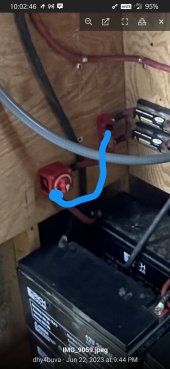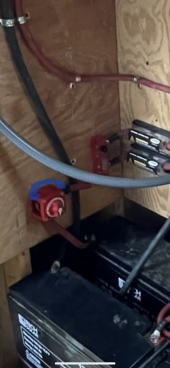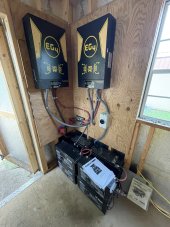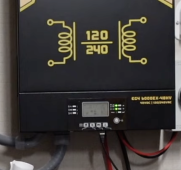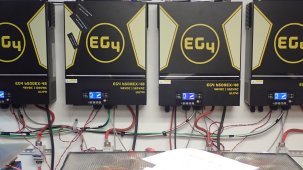dhy4buva
New Member
Hi all,
After watching Will’s many videos and searching on the forum, I’m still perplexed by what’s happened with this system today. I had two brand new EG4 6000ex’s installed this morning, with 8x Rich Solar 12v/200ah batteries wired in two parallel 48v banks (batteries were already here from previous build, otherwise I would have opted for 48v units instead).
After spending all day wiring it all up, it was finally time to power it on. The electrician jumpered the battery switch posts with the resistor (25w/30ohm) for 5-8 seconds, at which point he stopped due to the resistor getting too hot to hold.
When he activated the battery switch, we were greeted by sparks within the switch and found that neither inverter would light up. Further inspection would show each of the 200a Class T fuses blown.
Our guess is that we didn’t precharge long enough? In all the YouTube viewing I’ve done on the subject, 5-8 seconds seemed like enough time. Perhaps we were wrong?
A couple questions for you guys:
1. Is it because we have two inverters, both with caps that are making the precharge take longer?
2. Are the fuses large enough at 200a?
3. I’m still confused as to how with the amount of precharging we did, there was still enough current to pop two 200a fuses?
4. If 5-8 seconds wasn’t enough, how much is? Should I measure amps with a DC clamp meter and precharge til the current reads 0?
5. Should I be worried about any potential damage to these virgin inverters?
Thanks in advance. I’m guessing this is a super elementary question for all the more experienced folks here.
After watching Will’s many videos and searching on the forum, I’m still perplexed by what’s happened with this system today. I had two brand new EG4 6000ex’s installed this morning, with 8x Rich Solar 12v/200ah batteries wired in two parallel 48v banks (batteries were already here from previous build, otherwise I would have opted for 48v units instead).
After spending all day wiring it all up, it was finally time to power it on. The electrician jumpered the battery switch posts with the resistor (25w/30ohm) for 5-8 seconds, at which point he stopped due to the resistor getting too hot to hold.
When he activated the battery switch, we were greeted by sparks within the switch and found that neither inverter would light up. Further inspection would show each of the 200a Class T fuses blown.
Our guess is that we didn’t precharge long enough? In all the YouTube viewing I’ve done on the subject, 5-8 seconds seemed like enough time. Perhaps we were wrong?
A couple questions for you guys:
1. Is it because we have two inverters, both with caps that are making the precharge take longer?
2. Are the fuses large enough at 200a?
3. I’m still confused as to how with the amount of precharging we did, there was still enough current to pop two 200a fuses?
4. If 5-8 seconds wasn’t enough, how much is? Should I measure amps with a DC clamp meter and precharge til the current reads 0?
5. Should I be worried about any potential damage to these virgin inverters?
Thanks in advance. I’m guessing this is a super elementary question for all the more experienced folks here.
Attachments
Last edited:




